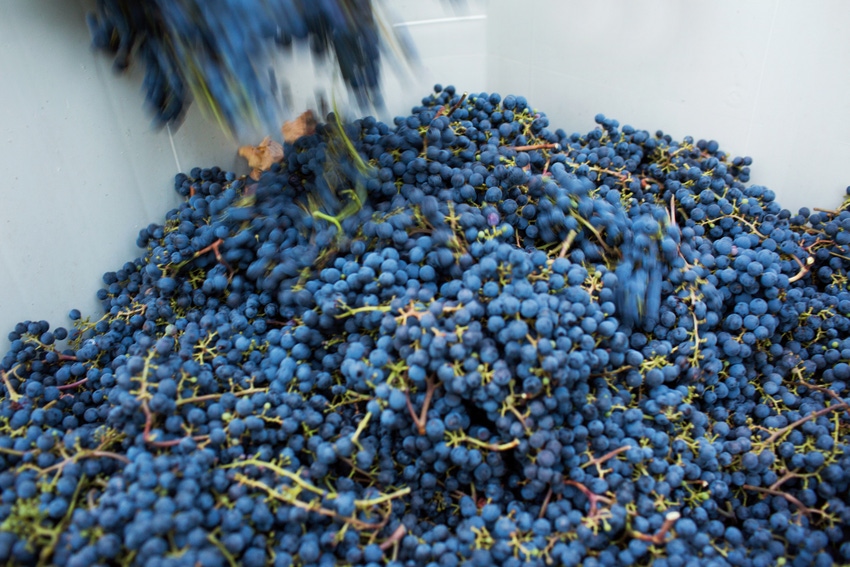
The 2016 Mendocino County wine grape harvest got underway the first week of August as growers began picking Chardonnay and Pinot Noir for sparkling wines. The harvest for still wine production is expected to start by the last full week of the month, according to Zac Robinson.
Robinson is a co-owner of his family’s Husch Vineyards. They grow 30 acres of Chardonnay, Pinot Noir and Gewürtztraminer in the Anderson Valley and make wines from grapes grown here and elsewhere in the county.
While beginning some two weeks later than the record-early start in 2015, this year’s harvest is, nonetheless, coming on several days earlier than usual, Robinson notes. He attributes that to a uniformly warm growing season.
“The vineyards look wonderful,” says Robinson, who, as a wine maker, admits to being an eternal optimist. “This season has been going well. The canopies are healthy. Insect and disease pressures have been low this season, and the fruit looks really pretty.”
Rains that fell frequently but in relatively small amounts throughout the winter and early spring filled area ponds. That hasn’t happened since 2012. “The past three years were hard droughts,” Robinson says. “Rainfall this year has been average. But, given the previous dry seasons, it’s seemed like a plethora of water.”
The red grapes he crushes hadn’t yet reached full size by the second week of August. Weights of clusters he sampled then indicated yields are likely to come in no higher than average at best. Meanwhile, production of his white varieties appears be average or better
Although always on the watch for any flare up of powdery mildew, usually this fungal isn’t a major threat to his vineyard, Robinson notes. And, that was the case this year.
His main insect pest, leafhopper, hasn’t been much of a concern to him this year, either.
His IPM program, which dovetails with his efforts to control the quality of his grapes, focuses on pre-emptive action to limit any buildup in leafhopper numbers.
“We try to stay ahead of leafhoppers all season long by removing the food source for the first and second generation,” he says. “We do that by removing the first and second leaves on each shoot to expose the fruit to some sun. These are the same leaves where the first several generations of leafhoppers live.
“If we get the timing right, the nymphs are on the leaves that we drop on the ground where predators feed on the nymphs. Knocking the populations back like that up front can lead to a big benefit in controlling leafhoppers late in the season.”
The only immediate concern for Robinson and other Mendocino growers as harvesting crews began bringing in this year’s crop was a string of 100-degree plus days of heat in the first part of August.
If prolonged, such high temperatures and sun burn could challenge wine makers by dehydrating the grapes and pushing sugar readings above desired levels and by breaking down the skins and altering tannin content. It would also force growers to pick up the pace.
“Instead of a leisurely harvest where the ripening and harvest work fits a certain schedule, suddenly everything would be ready to be picked tomorrow,” Robinson says. “Then you have to race and make logistical compromises to salvage the crop rather than concentrating on picking the grapes at peak quality.”
About the Author(s)
You May Also Like




